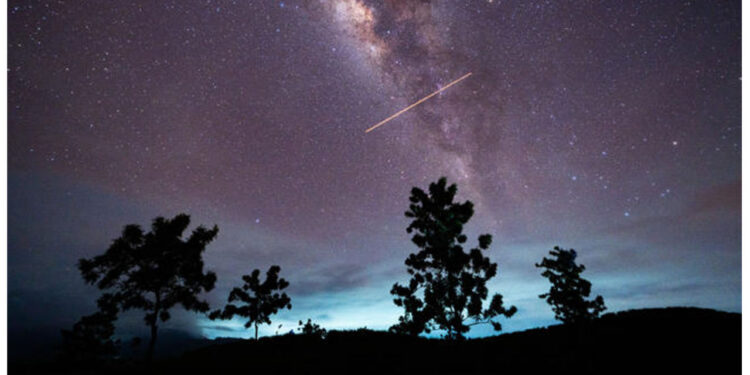Astronomy enthusiasts, prepare for one of the year’s best meteor showers: the Eta Aquariids are about to peak, according to NASA.
The shower will peak overnight on Sunday and Monday, with meteors visible throughout the week, according to NASA. The peak occurs near a new moon, so the sky will be darker, making it easier to see meteors.
When and where to see the Eta Aquariids meteor shower
The best time to watch the meteor shower is overnight on Sunday and Monday. The shower will be visible in both the Northern and Southern Hemispheres during the pre-dawn hours, with the Southern Hemisphere providing the best viewing conditions. Viewers in the Southern Hemisphere can witness up to 40 meteors every hour, while those in the Northern Hemisphere can only see 10–20 per hour.
Eta Aquarid meteors in the Northern Hemisphere are frequently Earthgrazers, which are lengthy meteors that appear to skim the Earth’s surface near the horizon.
To get the finest view, go to a location far away from the city or street lights. NASA recommends lying flat on your back, feet pointing east. It will take approximately 30 minutes in the dark for your eyes to adjust sufficiently to see meteors.
“Be patient; the show will last until dawn, so you have plenty of time to catch a glimpse,” NASA stated in a statement.
Following the peak, the shower will continue until May 27.
What makes the Eta Aquariids special?
The Eta Aquariids are famous for their incredible speed. According to NASA, these meteors can travel so fast that they leave behind glowing trains that can be visible for several seconds to minutes. In fact, the Eta Aquariids travel at a staggering speed of 44 miles per second.
The Eta Aquariids meteor shower is caused by space debris originating from Halley’s comet. Each time Halley’s comet returns to the inner solar system, it sheds a layer of ice and rocks into space. This shed space dust gives rise to two meteor showers annually: the Eta Aquarids in May and the Orionids in October.
What are meteor showers?
Meteors, which are space rocks that enter Earth’s atmosphere, can be seen streaking through the sky on a nightly basis. However, meteor showers occur less frequently. During these showers, a large number of meteors enter Earth’s atmosphere within a short period of time. As they pass through the atmosphere, the meteors create streaks of light due to the glowing and heating of the surrounding air.
Some meteors burn up during their descent, but a few manage to make it all the way to Earth, becoming known as meteorites.
Look up — what else can you see in the sky this spring?
Astronomy enthusiasts have the opportunity to observe the captivating Flower Moon this month as it graces the night sky. According to NASA, the peak illumination of May’s full moon will occur on May 23. For those eager to witness this celestial spectacle, the Old Farmer’s Almanac provides specific moonrise times tailored to various ZIP codes across the United States.
The full moon in May marks the end of the spring season. The full moon in June achieves its peak illumination on June 21, one day after the summer solstice.
According to the American Meteor Society, the next meteor shower will be the Southern Delta Aquariids in July.










